[I am not doing a blog post for this survey as I am creating a ZINE for TYPOGRAPHY]
I am planning on covering German typographers and their contributions to modern typography

hurts the eyes.
[I am not doing a blog post for this survey as I am creating a ZINE for TYPOGRAPHY]
I am planning on covering German typographers and their contributions to modern typography
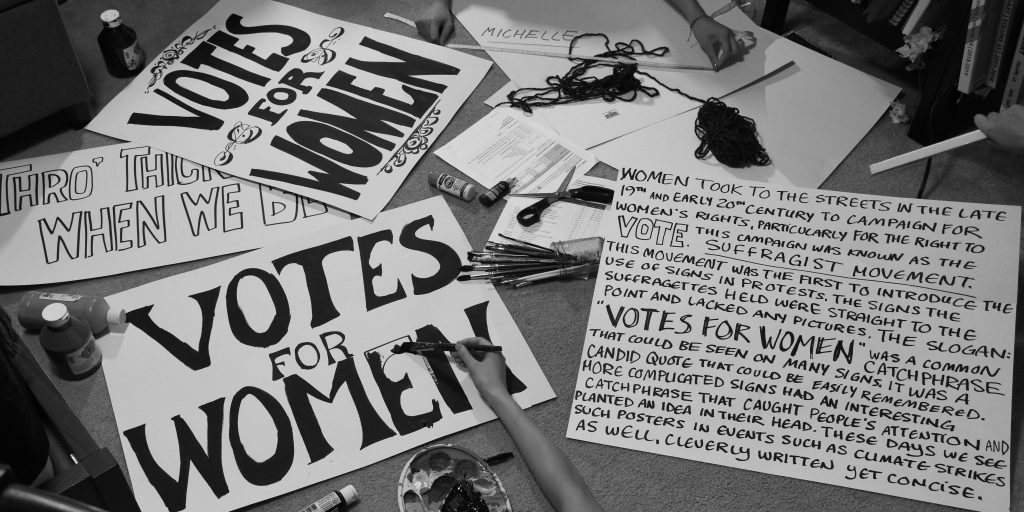
Geopolitics/Artifact
For my second spread, I was to cover geopolitical issues of the late 19th and early 20th centuries. I chose to recreate signs that the suffragettes held while taking to the streets. I set a timer on my camera and had my siblings and myself pose as if we were in the process of creating the signs, as I felt that it would be more interesting than just having the signs being held. I changed my camera settings to shoot in black and white to imitate how pictures were like back in the 1920s. The most memorable and common catchphrase on the signs were “VOTES FOR WOMEN” which was why I had to create two signs containing the phrase. I scattered objects that I thought would make the space throughout the image less empty. The third sign that was slightly hidden behind the two ‘votes for women’ poster was there because it was partially incomplete due to the fact that I had run out of space, however, instead of throwing it away, I liked how natural it made the scene look, so I kept it.
I would give myself an 8/10 for this spread. I felt that my signs looked successful and authentic, however, I would spread out my block of information so it is easier to read if I had to do this again. I would also create more signs that have more interesting phrases.
Drinking a Questionable Glass of Bootleg Beer Had Never Been More Delicious…
The year is 1920. It’s been a busy week so you decide to kick back and relax at your favourite bar. You ask for some rum. The bartender pours you a glass of milk instead. You look at it in shock. Your bartender looks at you apologetically. WHERE IS YOUR LIQUOR ??
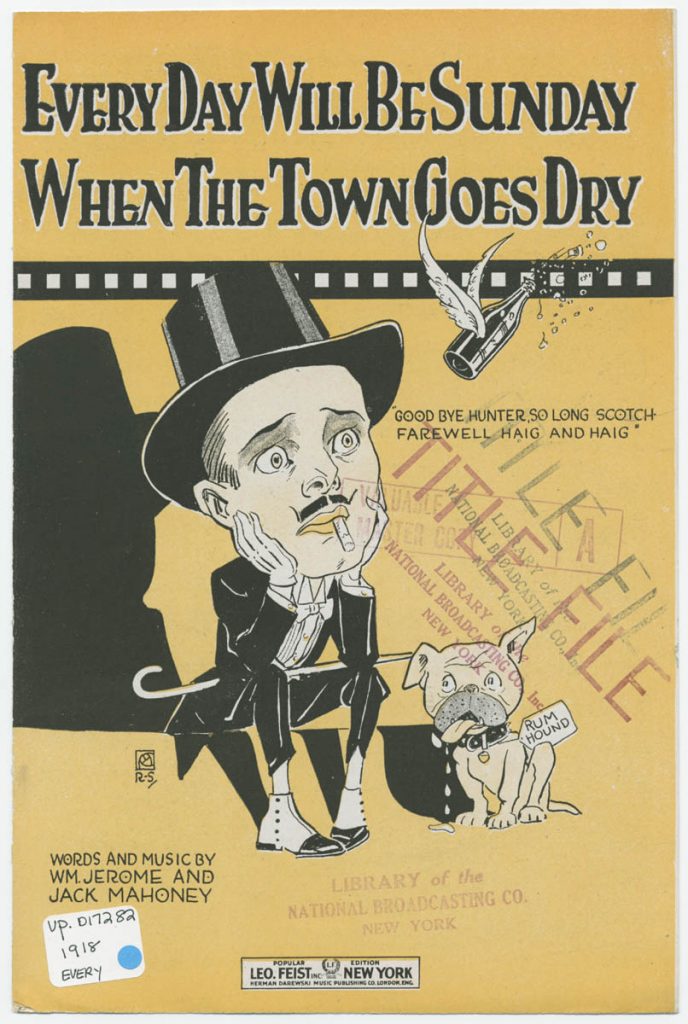
The manufacturing and distribution of alcohol was banned all across the United States in the 1920s under the 18th Amendment of the U.S. Constitution. Although America had been nowhere near the top countries of alcohol consumption, certain groups within the country felt that their own home was rampant with drunks that were ruining society.
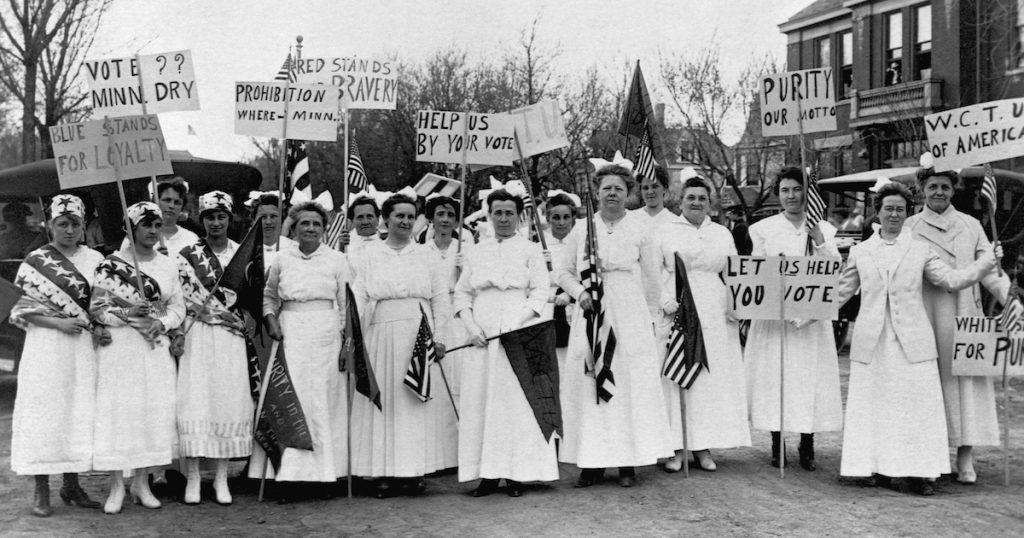
The national prohibition of alcohol or the ‘noble experiment’ did not come into effect overnight, nor was it a decision made on a whim. There had already been a movement for the ban of alcohol that dates back to the early 19th century. Alcohol had been seen as the cause for corruption, criminality, family problems, and poverty. The women’s suffrage movement and the church supported prohibition. Women and various religious groups believed that by taking alcohol away, there would be no abuse at home and the overall faith in religion would increase. Immigrants were seen as dirty drinkers and were associated with the poor. By getting rid of liquor, it was believed that it would bring America white and better again.
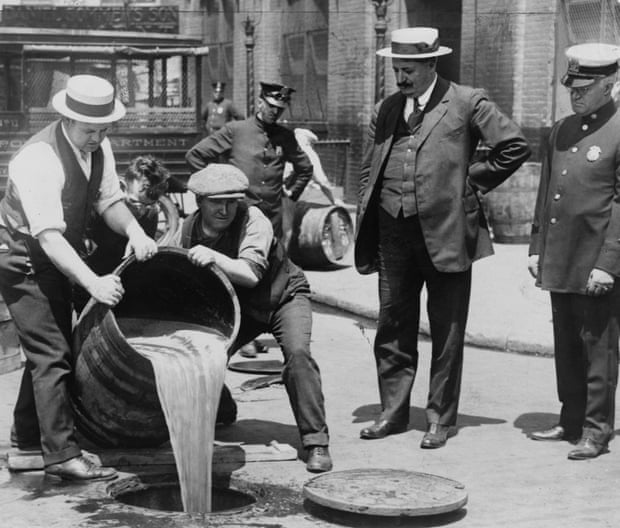
People had expected to see sales in goods increase, a rise in rent prices with the closing of saloons and just a general growth in the economy. Unexpectedly, restaurants failed due to the loss of profit in alcohol sales, theatres did poorly and the government lost billions in tax revenue without liquor taxes. Business and companies were not the only ones that suffered from the Prohibition. Thousands lost their jobs as truckers, brewers, waiters and other jobs were not needed now that there was no need for breweries and beer exports. Regular people had to resort to dangerous and shady means to obtain alcohol, which were through gangs that dominated the underground bootleg beer production. Prohibition led to the rise of organized crime as gangs took advantage of the people’s desperation to get alcohol in their hands. They made a gross amount of money from smuggling and selling bootleg alcohol.
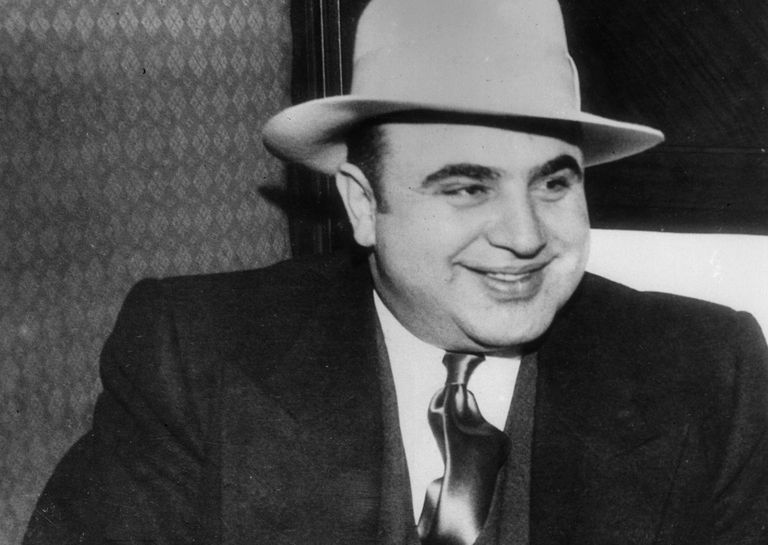
After 13 years, the Prohibition was lifted following many complaints and consequences. Businesses and the unemployed had suffered greatly with the Great Depression and morale was extremely low. America had not seen an improvement in health and hygiene like they had predicted, while crime and corruption rates had not gone down at all. The Prohibition was a gigantic flop and did more harm than good.


Sources:
www.thejournal.ie/prohibition-america-alcohol-twenties-910365-May2013/
www.ncbi.nlm.nih.gov/pmc/articles/PMC1470475/
www.pbs.org/kenburns/prohibition/unintended-consequences/
www.theguardian.com/commentisfree/2016/mar/30/prohibition-google-autocomplete
www.thecanadianencyclopedia.ca/en/article/prohibition
Max Ernst (1897-1976) was a German-born artist who was known for pioneering the Dada and Surrealism movements. Although he was never formally trained, he created countless paintings, sculptures, prints, and collages depicting the surreal and unnatural.
As a young adult, he studied philosophy, which was where he became interested in the art of the mentally ill as they were full of unbounded creativity and emotion.
After serving in WWI, Ernst was traumatized by the things he saw during his time in the trenches, and he used art as an outlet for his trauma. He became critical of western culture and the modern world, which was a common theme in his works.
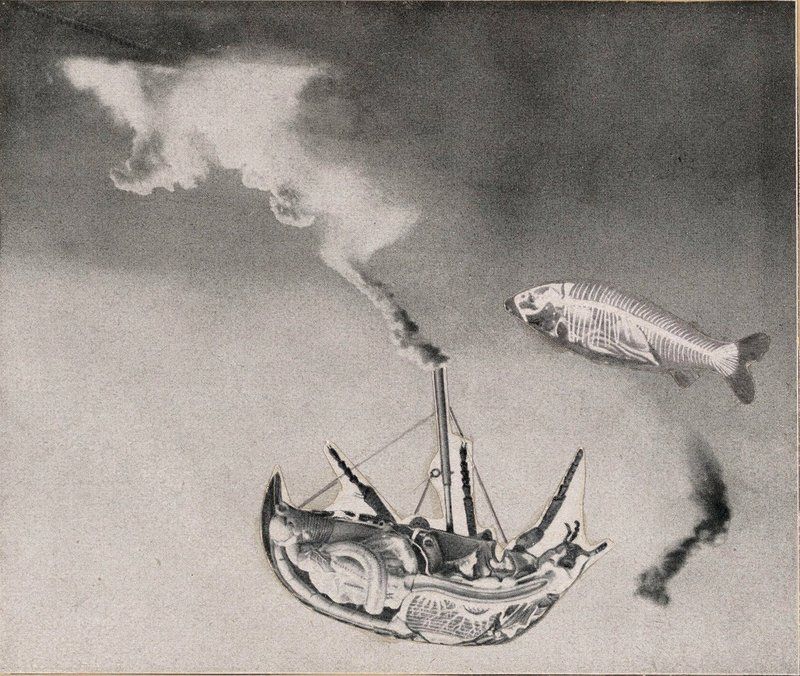
He created two techniques: frottage and grattage, which contributed to the Surrealist movement.
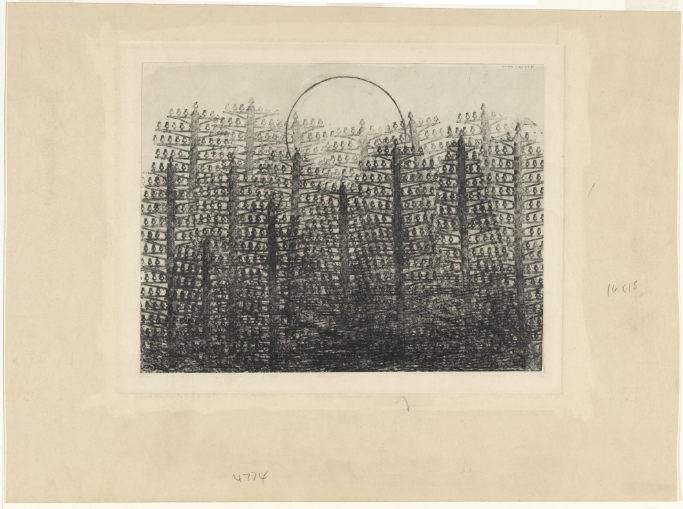
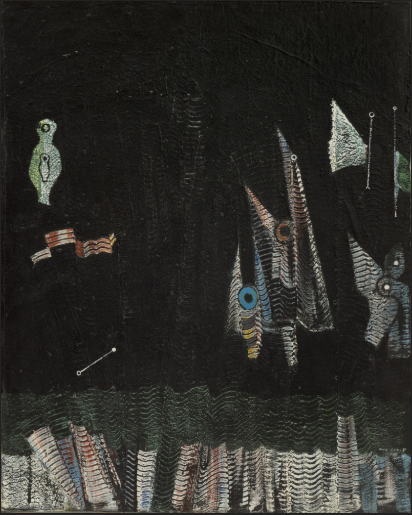
Ernst’s work is incredibly complex and requires one to look at it more than once. It clearly reflects the mind of someone who is disillusioned and critical of societal norms. I like how the subjects in his paintings stand out against softer backgrounds.
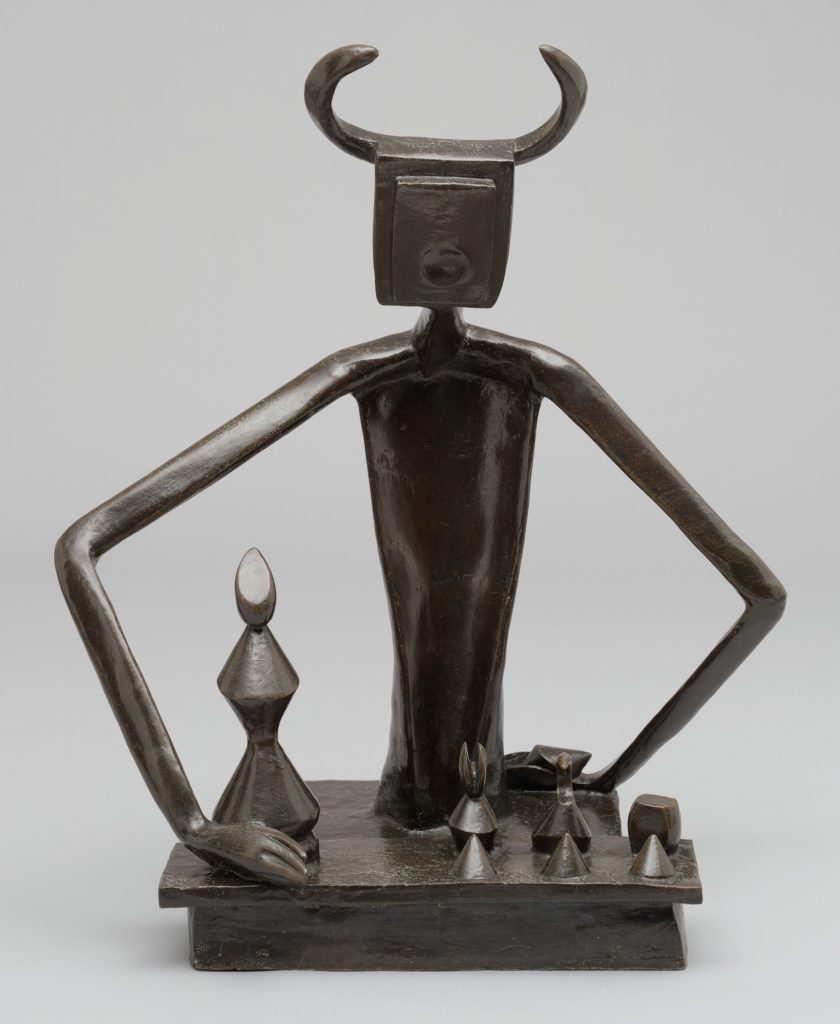
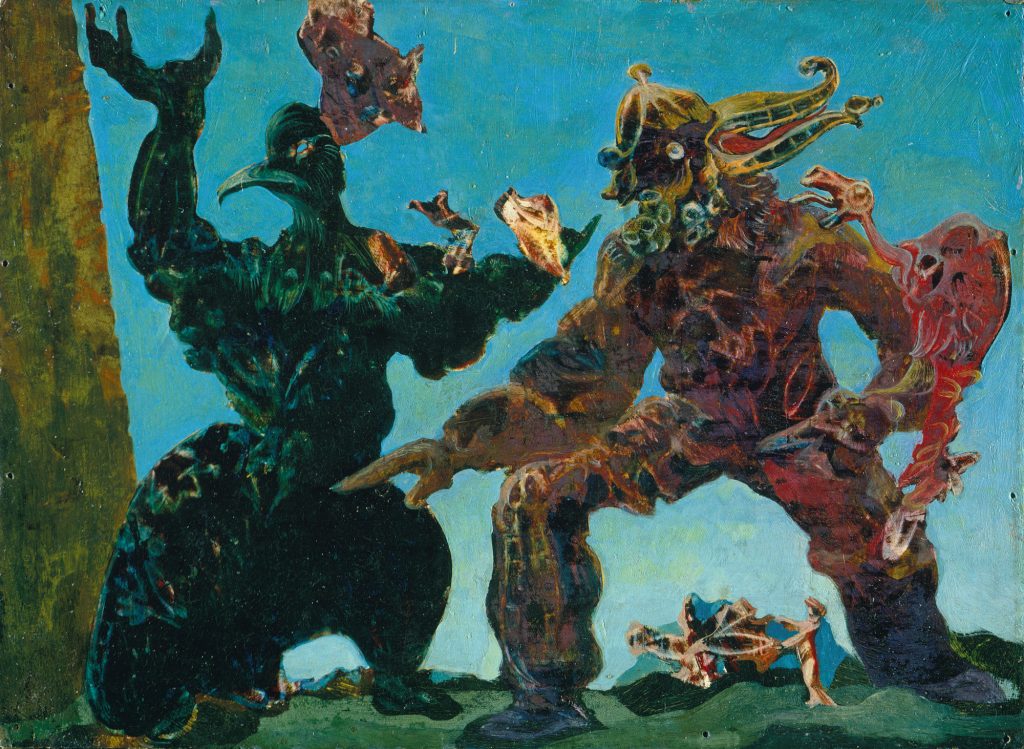
Sources:
www.britannica.com/biography/Max-Ernst
www.museothyssen.org/en/collection/artists/ernst-max/solitary-and-conjugal-trees
If You Thought Putting on a Sweater in the Morning Was Hard, You Should See These Guys….
Fashion, like art and literary trends, have been constantly changing with every year and decade that goes by. Although fashion trends have changed greatly for men throughout time- from heavy robes to fitted suits, very little changes can be seen across the decades that are close to one another, therefore there will be a greater focus on women’s’ dress in the early 20th century as they are continuously changing.
The Belle Epoch was a period when European countries had the greatest influence upon outside countries and were politically strong. During this time morale was high, and there was economic stability, which led to an advancement in art, music and fashion, especially in France. This led to Paris being the center of fashion, where rich women would come to buy their clothes, which were decked out in feathers, lace and pearls.
Following the Victorian era, where women sported bulky garments and restrictive frames, came the Edwardian era which introduced a more natural and fitted shape in clothing.
What follows is a list of some garments that were popular and widely worn by women:
Corsets- Having a slim figure was desirable as it would mean that one was refined and dignified. In order to achieve that ideal lithe form, women would wear corsets that would constrict the upper body. In the early 20th century, Dr. Inès Gaches-Sarraute recognized the dangers of wearing a corset. She designed a new corset that would improve the health of women and prevent many female-related health problems. This new corset encouraged a healthier posture by removing pressure from the waist and diaphragm. However, this resulted in pushing the chest forward and pushing the hips back, forming an S-shaped figure.
Hobble Skirt- Amongst the many skirt forms worn by women during this period, the hobble skirt was very popular. Being in especially great demand between 1910 to 1913, the hobble skirt was a close-fitting skirt that brought the knees together and cinched in at the ankles. It was extremely difficult to walk in, and women would have to take tiny steps to get around. The wiggle skirt, made famous by Marilyn Monroe in the ’50s, was based off the hobble skirt.
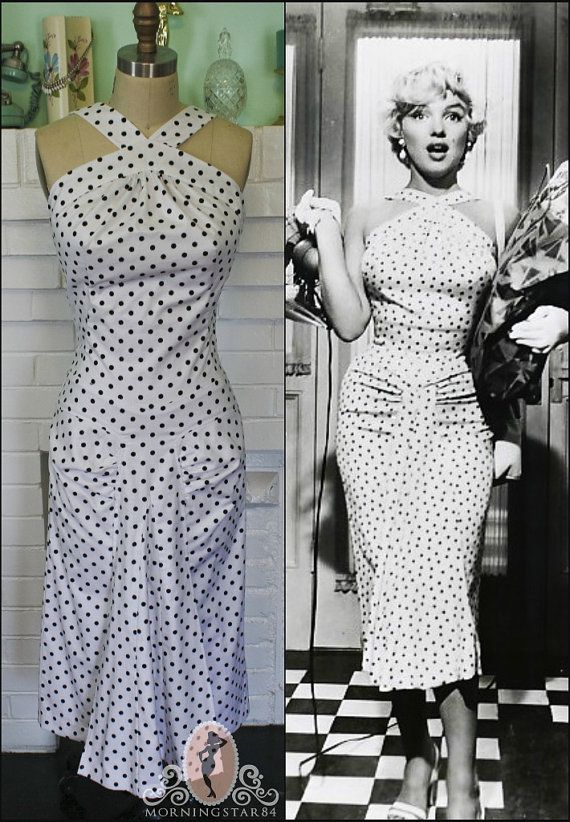
Feathered hat- Feathered hats were the most important staple accessory in a woman’s wardrobe. The popularity of these hats reached its peak during the early 20th century. Women’s hats were brimming with bird feathers, wings, and even taxidermied bodies. Large plumes and flowers dominated the hats. During this time, there was no consideration for the number of birds being killed for hats as everyone believed birds were an inexhaustible resource, which led to a huge decline in the bird population.
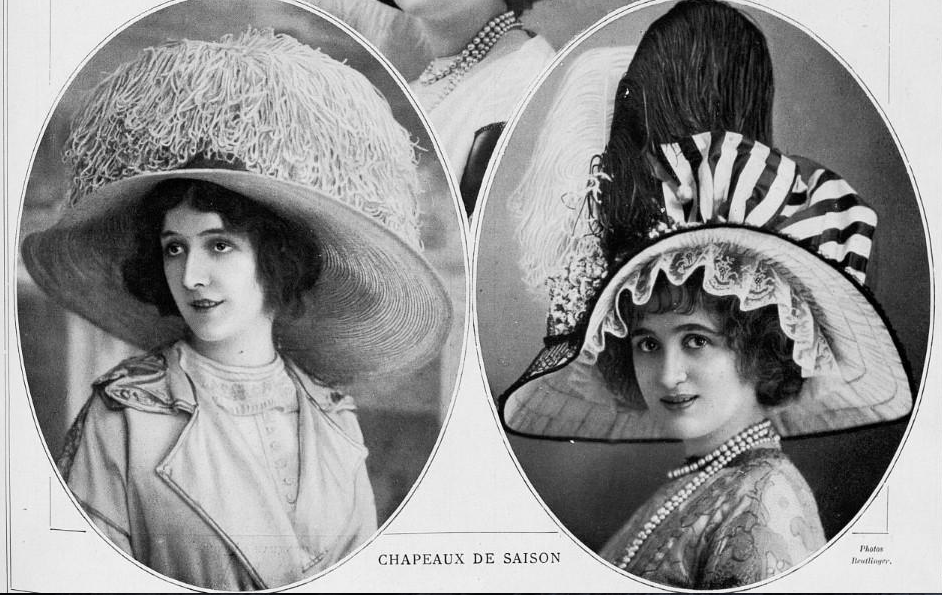
Sources:
fashionhistory.fitnyc.edu/1900-1909/
glamourdaze.com/history-of-womens-fashion/1900-to-1919
www.britannica.com/topic/dress-clothing/The-early-20th-century
Franz Marc was a German expressionist painter and printmaker. Although his life ended early, he was a key figure in the German expressionist trend and would be a source of inspiration for the evolving movement.
His painting career began when he travelled to Paris, where he studied the different Parisian painting trends, allowing him to try his hand at different styles including the naturalistic academic style.
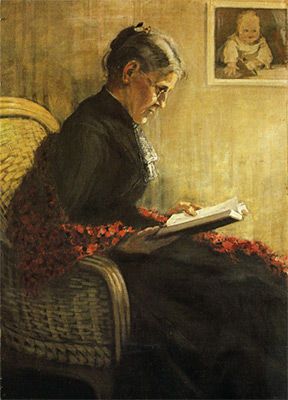
During this time he was interested in the animal form, so he mastered painting them realistically. Inspired by French impressionist paintings and artists like Van Gogh and Picasso, his style began to take on a more impressionistic form.
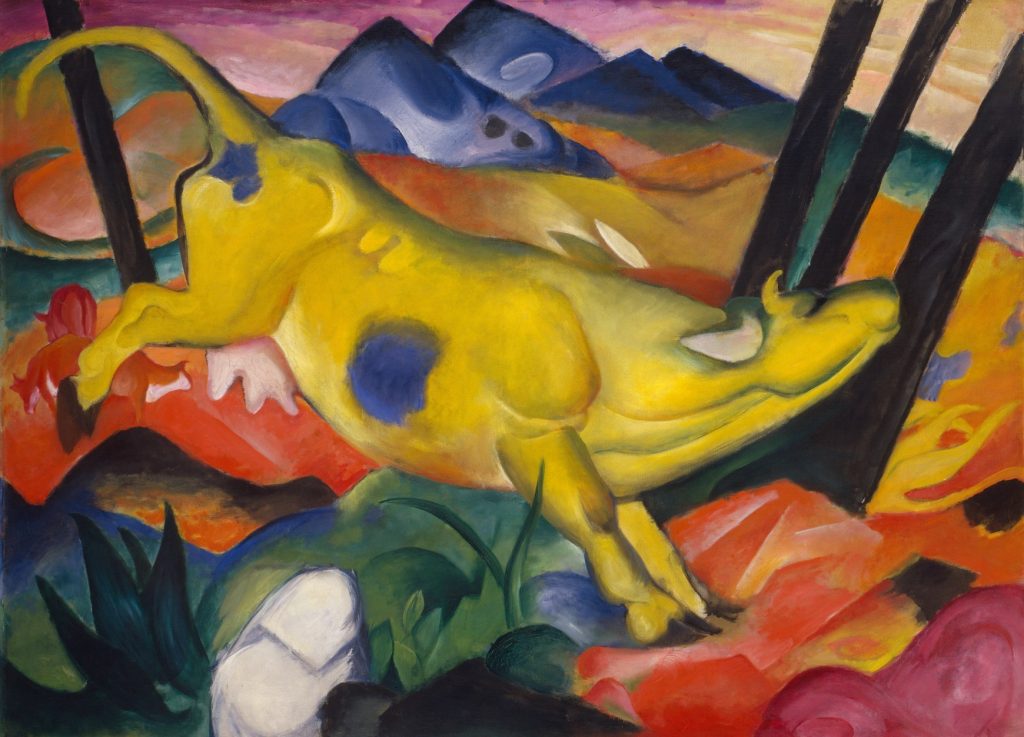
Marc founded the Der Blaue Reiter (The Blue Rider) which was a group of German Expressionist artists. When he was drafted into the army, Marc utilized his painting skills to paint on tarps to hide artillery from fighter planes. He painted pointillist designs in the style of “Manet to Kandinsky”. Unfortunately, he did not survive the war. At the age of 36, he was struck down by a shell and was killed instantly.
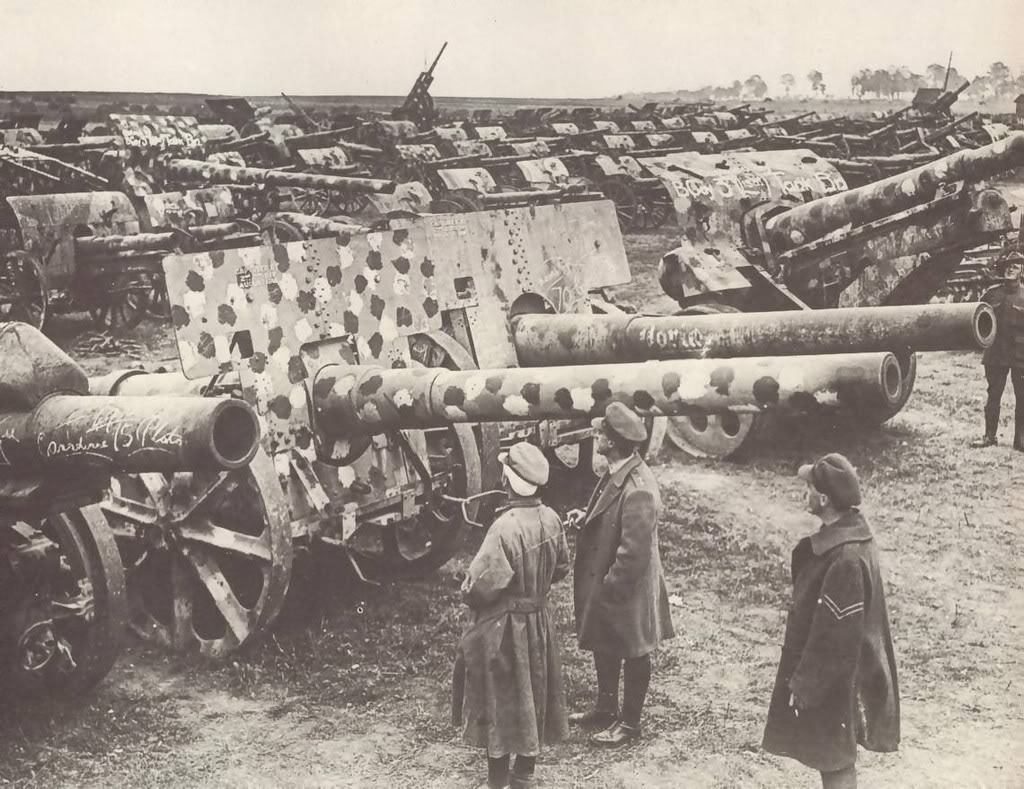
I chose Franz Marc because I randomly put his name into Google from the list of artists and immediately recognized his art even though I have never heard of his name before. His abstract animal paintings are truly unique and unforgettable. His subjects are dynamic and always seem to be moving within the painting due to the bright and loud colours and blocky shapes. The animals in his works are either sharp and block-like or round and balloon-like.
Sources:
www.britannica.com/biography/Franz-Marc
www.wikiart.org/en/franz-marc
Georges Surat (1859-1891) was a French post-impressionistic artist that made great advances in the art world. From utilizing science in his art to founding a new art movement, he is nothing short of iconic.
Surat learned art the traditional way, studying at the École Municipale de Sculpture et Dessin and the École des Beaux-Arts before doing military service for a year. Upon returning he worked with conté and monochrome drawings before moving on to other things.
Surat was interested in the relationship between art and science, reading several texts of perception, colour, form and line. Inspired by Michel-Eugène Chevreul’s work in colour theory, he applied his learnings to his paintings. He would paint compositions entirely of pure coloured dots instead of mixing colours together. He stated that the eye would mix the coloured dots together and form a full image from far. This technique he developed was called divisionism, or pointillism.
I’ve encountered Surat’s works many times in the past, especially in elementary school where I would have to create works in pointillism for art projects. His paintings were always shown in examples, but his name was never mentioned, so I never connected a name to his works until now. Although Surat is famously known for his pointillism works, I discovered (through Wikipedia) that he has done many works in conté as well, which I personally like better. Something about them feels so.. contemporary?? I really like how soft they are and there are no harsh lines at all.
Sources:
en.wikipedia.org/wiki/Georges_Seurat
www.britannica.com/biography/Georges-Seurat
www.artnet.com/artists/georges-seurat/
www.georgesseurat.org/the-complete-works.html?pageno=1
[I’m the designer for this survey so I will not be writing a research blog post]
Architecture/Spread
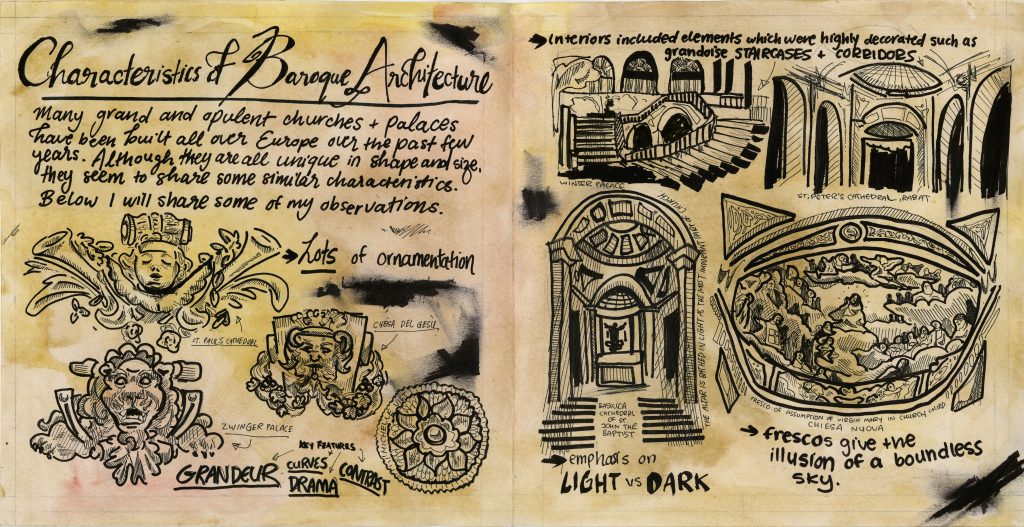
For this spread, I was to cover baroque architecture. The topic was broad as there were many different things that could be covered, so I decided to focus on the characteristics of baroque architecture since I found that the most interesting. I tried to make my spread look like a journal entry/sketchbook page of some European traveller observing baroque architecture. I painted the paper with watercolours to give it an aged effect and exclusively used black ink. I drew different parts of several baroque buildings throughout the spread which I think are most successful part of my spread. I used a black marker and smudged it to give it the effect of smudged ink that fell on the page so that it would feel more realistic. I would give myself an 8/10 for this assignment. If I were to do this again, I would rework the layout as the text size and fonts are not consistent. I think I focused too much on the drawings and therefore did not leave enough space for some of the text so I had to make up for it by compromising the size of them. I am also afraid that this ‘journal entry’ concept is not clear enough and will come off as too simple..? Overall though I am quite happy with my spread and am looking forward to do more.
You Can Thank William Morris for Your Great-Great-Aunt’s Ugly Interior Home
As an enthusiast of handcrafted, traditional works of art and furniture, William Morris started a company of artisans that worked exclusively by hand. His company, Morris & Co. introduced the world to a whole new style of textiles and wallpaper and started a movement that brought back the demand for classic craftsmanship as well as an appreciation for the aesthetically pleasing patterns inspired by the past.
The wallpapers that Morris produced all look different yet share similar characteristics such as the colour. Morris brought back the use of organic vegetable dyes instead of chemical aniline dyes. He used indigo for blues, shells and roots for browns, plants and crushed bugs for red and the weld plant for yellows. As a result, the dyes produced a soft, but rich and saturated effect. He would never use bright colours as only chemicals would produce such hues.
Morris was inspired by several art periods which led him to design the naturalistic, yet ornate designs of his wallpaper. This leads us to ask: what inspired him and what were the colour characteristics of them?
The Renaissance
Pigments for renaissance paintings were made from crushed minerals or plants, similar to the methods Morris used for his textiles. As they were made from natural materials, they were rich and deep in colour.
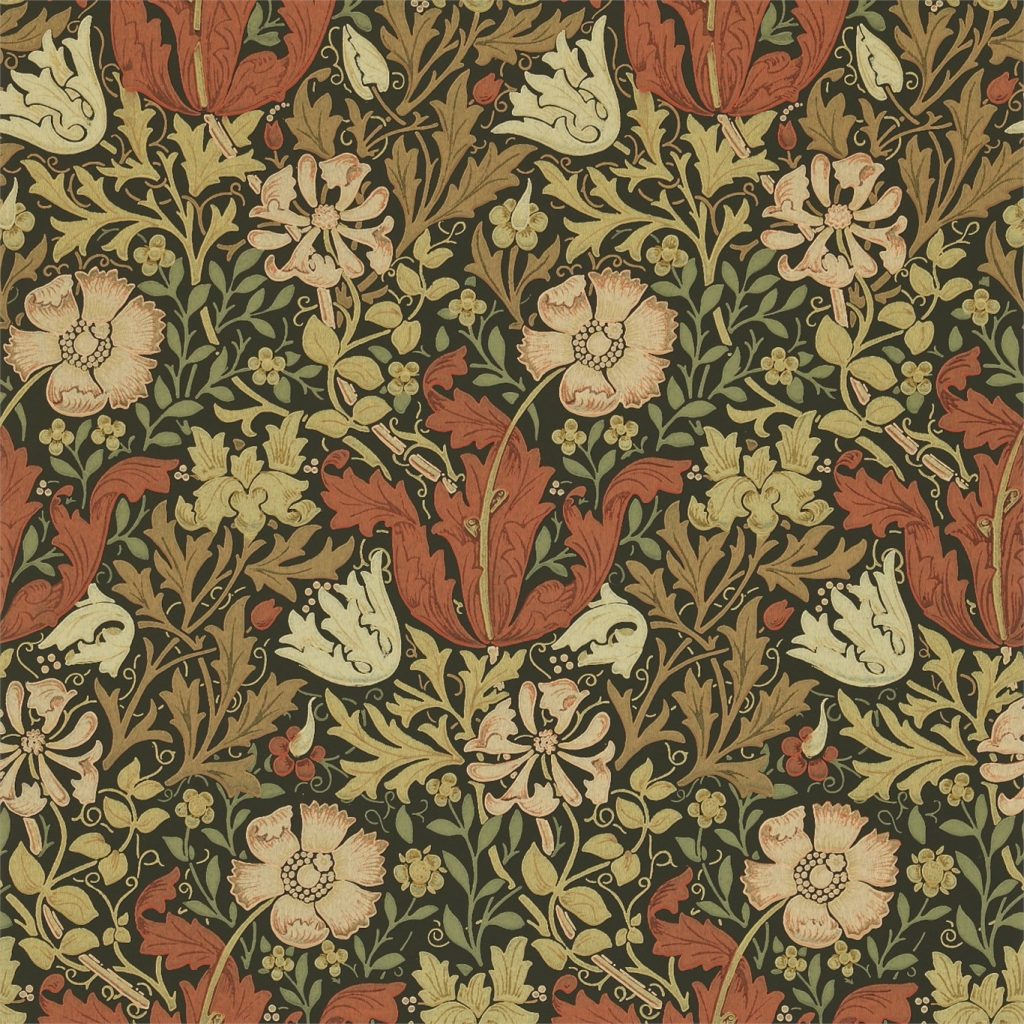
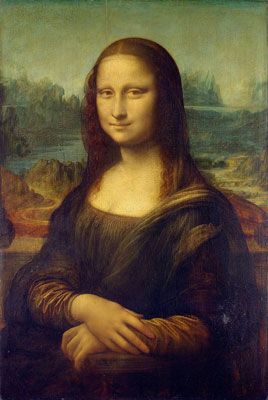
Ukiyo-e
Early prints were monochromatic, which meant that colour was added by hand. Muted shades of pink, orange, green and yellow were commonly added. These colours were made from lead mixed with sulphur and other minerals. The end result is soft, dusty colours.
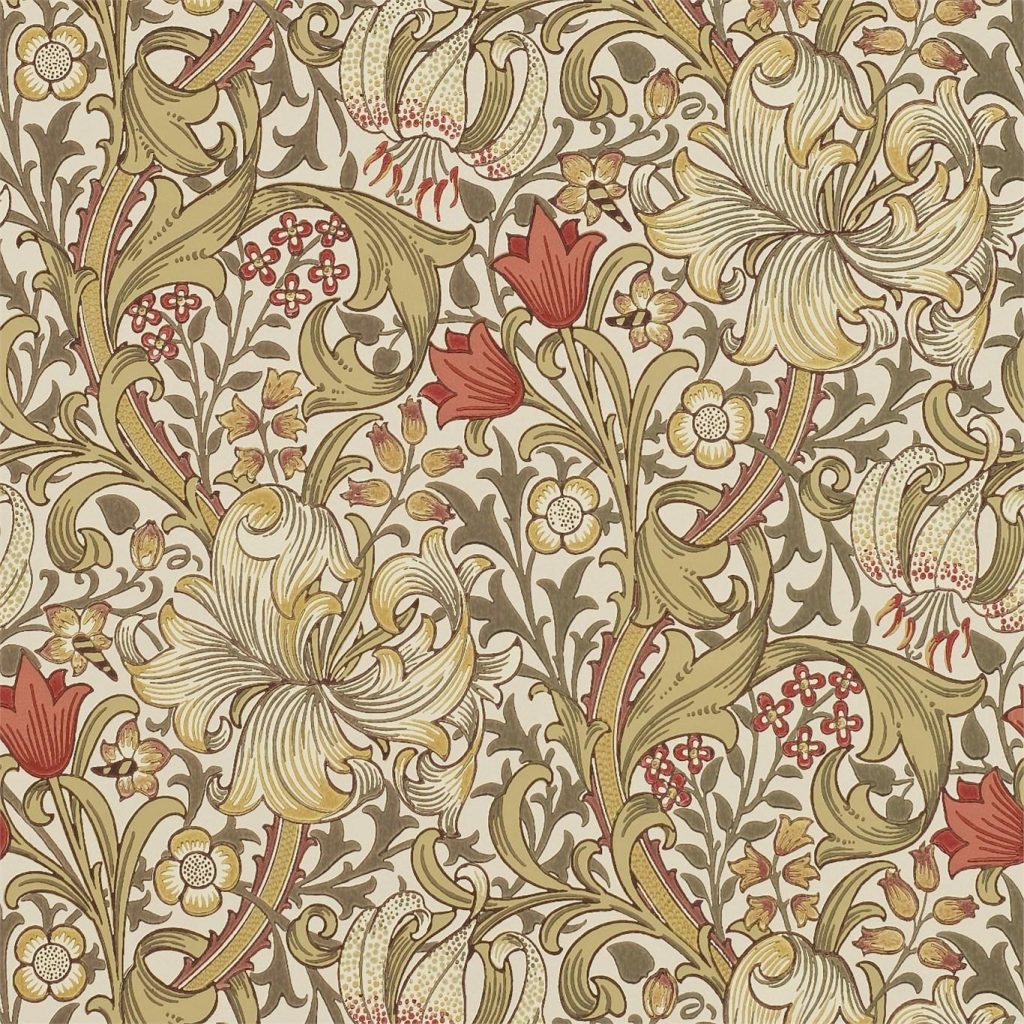
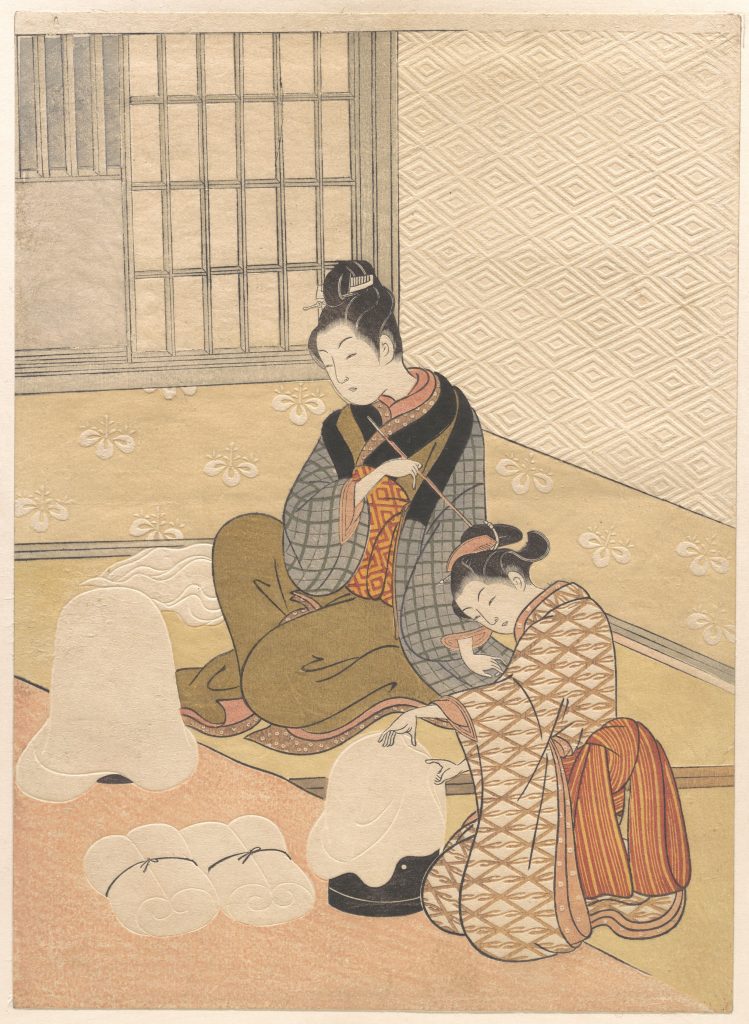
Rococo
The rococo period was characterized by soft pastels. It contrasted with the dark, primary colours of the Baroque period which preceded it. Other predominant colours were gold, ivory white and other light colours.
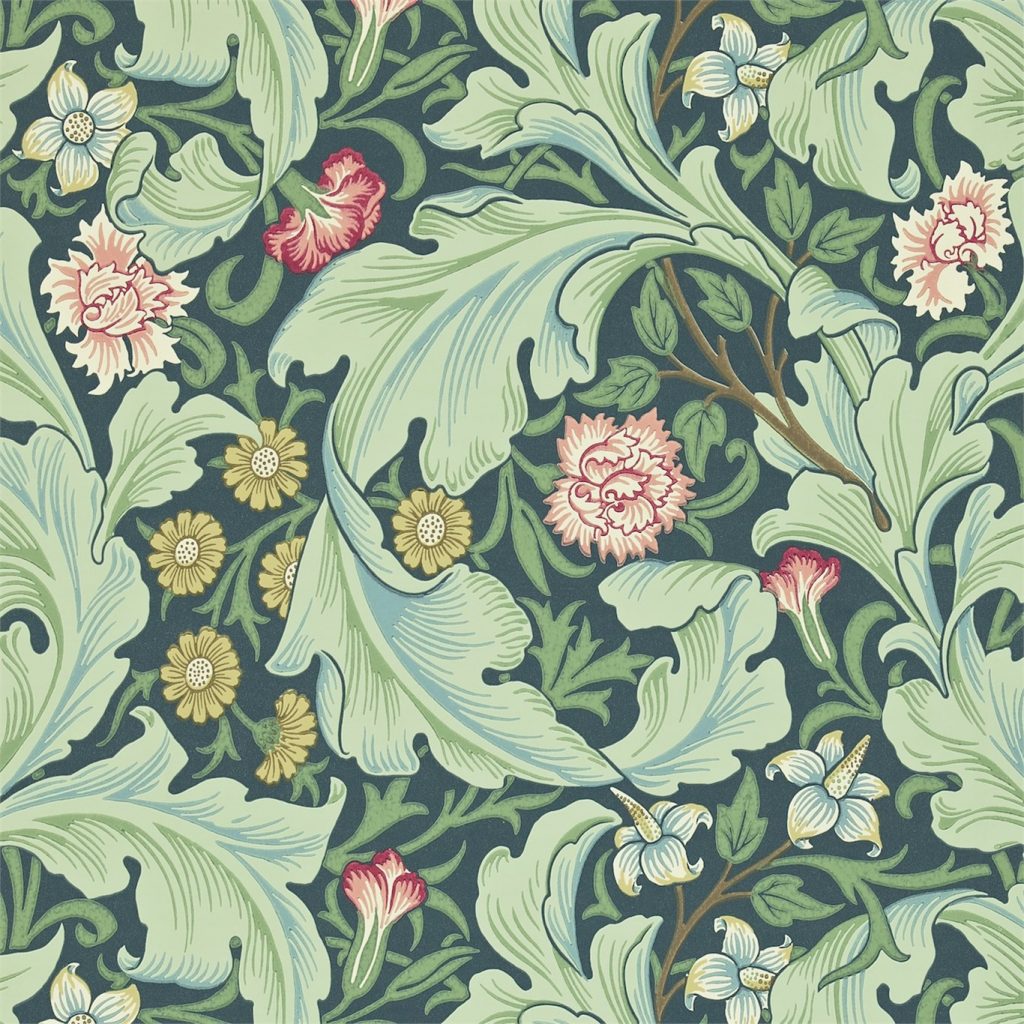
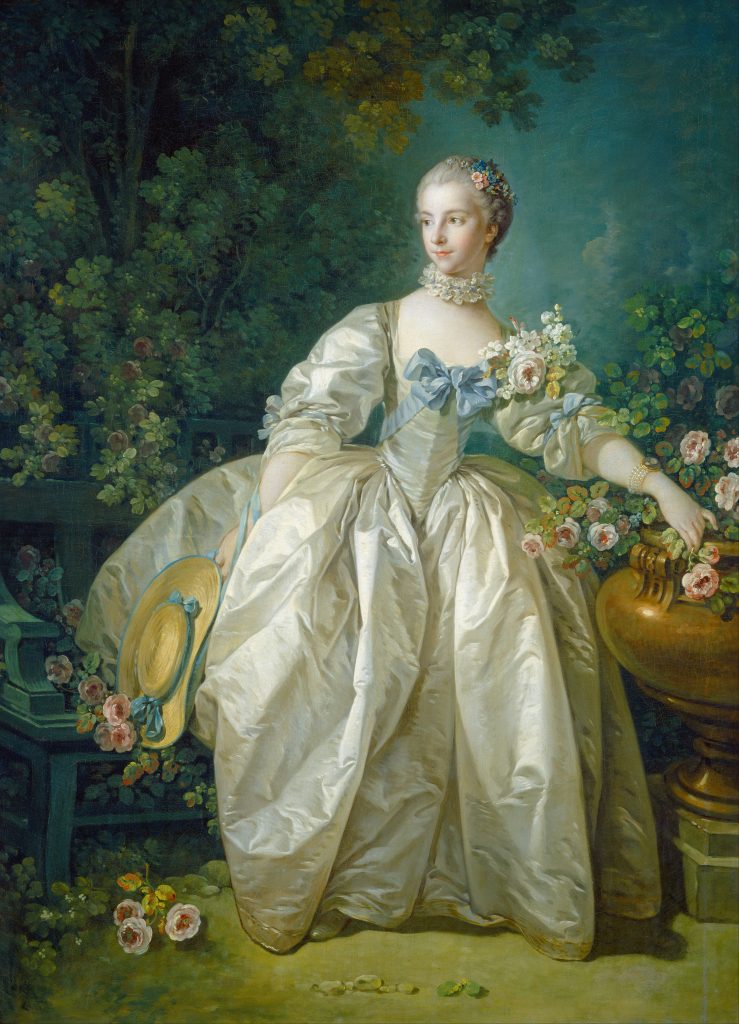
Gothic
Gothic architecture featured stained glass buildings which were brightly coloured in order to create a colourful cast of light when the sun hit. The stained glass has many dark blue and red pieces, along with light blues, greens, purples, a little bit of yellow. The colours are very saturated and pure.

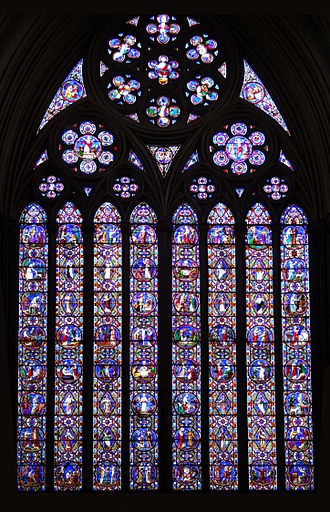
Sources:
www.jankanuch.int-des.com/uncategorized/william-morris-a-visual-guide/
www.patternobserver.com/2014/11/25/history-surface-design-william-morris/
www.craigandrose.com/all-articles/period-styles-arts-and-crafts-movement/
www.victorianweb.org/authors/morris/delucia10.html
www.daydreamtourist.com/2014/12/09/william-morris/